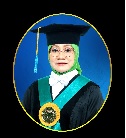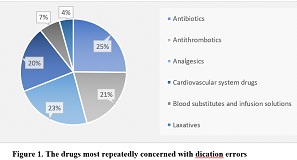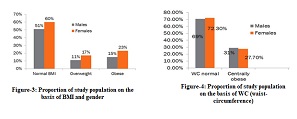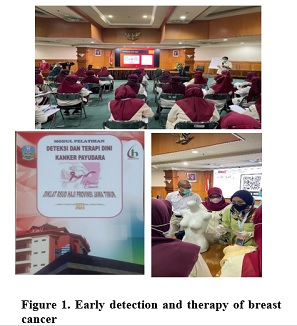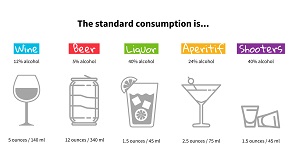Factors Associated to The Occurrence of Stunting at The Primary Health Center in Madiun City, Indonesia

Stunting, a common nutritional problem characterized by a child's shorter stature due to growth failure, affects 11.5% of toddlers at Demangan Primary Health Center in Madiun, Indonesia. This research aimed to analyze factors linked to toddler stunting, using an observational analytical cross-sectional design. All toddlers visiting Demangan Primary Health Center's Integrated Health Post in Madiun were involved in the study sample. Maternal pre-pregnancy BMI, maternal upper arm circumference (LILA), maternal weight gain during pregnancy, inter-birth interval, low birth weight, per capita income, parental education, maternal knowledge on toddler's nutrition and parenting patterns of feeding were factors collected through questionnaires, Maternal and Child Health books, and primary health center records. Univariate and bivariate analysis results were tested using the Chi-Square or Fisher Exact test. In this study, 156 samples were obtained, consisting of 18 stunted toddlers (11.5%) and 138 normal toddlers (88.5%). Stunting associated with maternal pre-pregnancy BMI showed p=0.020, maternal upper arm circumference p=0.008, maternal weight gain during pregnancy p≤0.001, low birth weight p=0.001, per capita income p=0.007, and maternal knowledge on toddler's nutrition had p=0.011. In conclusion, pre-pregnancy conditions significantly influence stunting. So, enhancing interventions for maternal health during pre-pregnancy is crucial for maximizing impact.
INTRODUCTION
One of the five stages in building a more productive and competitive Indonesia, with high flexibility to face changes in the world, is the development of human resources. Human resource development can begin by ensuring the health of pregnant women, infants, toddlers, and school-age children11. The primary focus during this phase is addressing malnutrition in the early stages of life, as it can significantly impact the quality of human resources and hinder optimal growth attainment22. There is a term known as the First 1,000 Days of Life, considered crucial in determining a person’s future quality of life1.Therefore, proper nutrition fulfillment during this period is essential to prevent the emergence of nutritional problems, especially in toddlers. Stunting is one of the numerous nutritional issues observed in Indonesia. It occurs when a child’s posture is too short for their age due to growth failure. According to the child growth standards established by the World Health Organization (WHO), stunting is defined as a condition where a child’s height is more than 2 standard deviations (SD) below WHO standards compared to the average growth of other children33.De Onis and Branca (2016) also emphasized that stunting is defined as a state of malnutrition characterized by a decrease in child nutrition up to -2SD from length/height according to age44.
WHO recommends a stunting prevalence target of 20% for a region55. However, Indonesia still has not reached this target. When observed over the past decade, the incidence of stunting remains high to date even at the national level reaching a percentage of 37%66. The incidence of stunting nationally has decreased, from 37.2% in 2013 to 30.8% in 201877. Furthermore, based on Teja’s study (2019), the national stunting prevalence rate in 2019 decreased again, which was 27.67%55.East Java, with a prevalence of 26.86% according to the Susenas Integration Implementation Report in March 2019 and the SSGBI 2019, remains above the WHO target, necessitating special attention for successful government programs in human resource development. The city of Madiun contributed to stunting cases in East Java with a prevalence of 17.44%88. Among its primary health centers, Demangan Primary Health Center has the highest prevalence at 11.4%. Although this is below the national figures and WHO targets, there is a concern as new cases are frequently reported, as discovered through interviews with health center staff. Further efforts are needed to address this issue and prevent the recurrence of new cases.
The high prevalence of stunting not only impacts the country’s progress but also hinders the overall quality of individuals. Stunting can have detrimental effects on physical, mental, intellectual, and cognitive development in the long run99. These factors influence children’s academic achievements, and later in life, impede daily productivity, making it challenging for individuals to develop into high-quality human beings. Moreover, stunting is linked to various diseases, increasing morbidity and mortality rates. According to the WHO conceptual framework, stunting is caused by household and family factors, including inadequate breastfeeding, insufficient food, the presence of infectious diseases, and home environment factors. Additionally, community and social factors such as social, economic, cultural, political, educational, health services, water sanitation, environment, food systems, and agriculture contribute to stunting1010. This suggests that stunting is a multifactorial condition. This study focuses on identifying factors contributing to stunting in toddlers.
MATERIALS AND METHODS
The research employed an observational analytical approach with a cross-sectional design. The participants included all toddlers from three Integrated Health Post (Posyandu) with the highest stunting prevalence, located at Demangan Primary Health Center in Madiun, Indonesia known for having the highest stunting prevalence. Sampling was carried out using a total sampling technique. It was conducted by considering the inclusion and exclusion criteria. Toddlers born at term, possessing a Maternal and Child Health book, and whose parents were willing to participate met all the inclusion criteria. Toddlers with a history of congenital diseases and/or severe infectious illnesses, as well as those with incomplete data, were excluded from the study. The study received approval from the Ethical Health Research Committee of Faculty Medicine Universitas Airlangga Surabaya, Indonesia, with ethics approval number 17/EC/KEPK/FKUA/2023 on 19 January 2023.
In this study, the variables used were stunting, maternal pre-pregnancy BMI, maternal upper arm circumference (LILA), maternal weight gain during pregnancy, inter-birth interval, low birth weight, per capita income, parental education, maternal knowledge on toddler’s nutrition and parenting patterns of feeding. Data were collected through questionnaires as primary data and secondary data from Maternal and Child Health books and primary health care records. The data collected from this study were examined through either a Chi-Square or Fisher’s Exact test.
RESULTS
In this research, 156 samples were acquired, comprising 18 cases of stunting (11.5%) and 138 normal toddlers (88.5%). These samples were gathered from three Integrated Health Posts in Demangan Primary Health Center, Madiun. The subsequent section presents the findings from the data analysis conducted in this study.
Characteristics | n | % |
Gender of toddlers | ||
Boys | 100 | 64.1 |
Girls | 56 | 35.9 |
Toddlers’ age (months) | ||
0 – 11 | 29 | 18.6 |
12 – 23 | 25 | 16.0 |
24 – 35 | 26 | 16.7 |
36 – 47 | 36 | 23.1 |
48 – 59 | 40 | 25.6 |
Mothers’ age (years) | ||
21 – 30 | 51 | 32.7 |
31 – 40 | 89 | |
BPS. Profil Statistik Kesehatan 2019. Profil Stat Kesehat [Internet]. 2019;1–431. Available from: www.bps.go.id
Amaliah N, Sari K, Suryaputri IY. Short Birth Length as One of The Determinant Factors of Child Growth and Development Delays on Children Aged 6-23 Months in Jaticempaka , Pondok Gede. J Ekol Kesehat. 2016;15(1):43–55.
WHO. Global nutrition targets 2025. Stunting policy brief (WHO/NMH/NHD/14.3). Geneva: World Health Organization. 2014
de Onis M, Branca F. Childhood stunting: A global perspective. Matern Child Nutr. 2016;12:12–26.
Teja M. Stunting Balita Indonesia Dan Penanggulangannya. Pus Penelit Badan Keahlian DPR RI. 2019;XI(22):13–8.
Beal T, Tumilowicz A, Sutrisna A, Izwardy D, Neufeld LM. A review of child stunting determinants in Indonesia. Matern Child Nutr [Internet]. 2018;14(4):1–10. Available from: https://www.ncbi.nlm.nih.gov/pmc/articles/PMC6175423/pdf/MCN-14-e12617.pdf
Kemenkes RI. Laporan Akhir Penelitian Studi Status Gizi Balita Di Indonesia Tahun 2019. Badan Penelit dan Pengemb Kesehat Kementeri Kesehat RI [Internet]. 2019;1–150. Available from: https://cegahstunting.id/unduhan/publikasi-data/
Kemenkes RI, BPS. Laporan Pelaksanaan Integrasi Susenas Maret 2019 dan SSGBI Tahun 2019. 2019;69.
Sutio D. Analisis Faktor-Faktor Risiko terhadap Kejadian Stunting pada Balita. J Dep Gizi Fak Kesehat Masarakat [Internet]. 2017;Vol. 28 No:247–56. Available from: https://ejournal2.litbang.kemkes.go.id/index.php/mpk/article/download/472/537/
Fajri FF. Faktor Maternal Pada Kejadian Stunting. J Med Hutama. 2021;02(04).
Hatijar H. Angka Kejadian Stunting Pada Bayi dan Balita. J Ilm Kesehat Sandi Husada. 2023;12(1).
Elisia L, Etika R, Aprilawati D, Mahiroh H. The Relationship Between Exclusive Breastfeeding History to Stunting Incidence in Children Aged 6-24 Months in The Working Area of The Gunung Anyar Community Health Center, Surabaya, Indonesia. J Community Med Public Heal Res. 2023;4(3):123–9
Sukmawati, Hendrayati, Chaerunnimah, Nurhumaira. Status Gizi Ibu Saat Hamil, Berat Badan Lahir Bayi Dengan Stunting Pada Balita. Media Gizi Pangan. 2018;25(1):18–24.
Pratiwi ED, Jumetan MA. Hubungan Indeks Masa Tubuh Ibu Hamil Dengan Kejadian Stunting di Desa Oben Kecamatan Nekamese Kabupaten Kupang. Mahesa Malahayati Heal Student J. 2023;3(5):1449–57.
Dewi R, Evrianasari N, Yuviska IA. Kadar Hb,Lila Dan Berat Badan Ibu Saat Hamil Berisiko Terhadap Kejadian Stunting Pada Anak Usia 1-3 Tahun. J Kebidanan Malahayati. 2020;6(1):57–64.
Fitri I, Wiji RN. Asupan zat gizi makro dan kenaikan berat badan selama hamil terhadap luaran kehamilan. J Gizi Klin Indones. 2018;15(2):66–74.
Ni Putu A, Nurul H. Pengaruh Peningkatan Berat Badan Terhadap Berat Badan Bayi Baru Lahir Di Puskesmas Kediri Tahun 2016. Bunda Edu-Midwifery J [Internet]. 2016; Available from: https://bemj.e-journal.id/BEMJ/article/view/4
Rahayu A, Yulidasari F, Putri AO, Anggraini L. Study Guide - Stunting dan Upaya Pencegahannya. Buku stunting dan upaya pencegahannya. 2018. 88 p.
Kamilia A. Berat Badan Lahir Rendah dengan Kejadian Stunting pada Anak. J Ilm Kesehat Sandi Husada. 2019;10(2).
Pacheco C do R, Picauly I, Sinaga M. Health, Food Consumption, Social Economy, and Stunting Incidence in Timor Leste. J Kesehat Masy. 2017;13(2).
Sholihah SC. Kejadian Stunting di Wilayah Kerja Puskesmas Dradah. J Kesehat Masy. 2023;7(April 2023):135–40.
Zilawati N, Wahyuningsih. Gambaran Pengetahuan Ibu Balita Tentang Gizi Pada Balita Usia 1-5 Tahun Di Puskesmas Wonogiri I. J Kebidanan. 2019;11(02):170.
Amalia ID, Lubis DPU, Khoeriyah SM. Hubungan Pengetahuan Ibu Tentang Gizi Dengan Kejadian Stunting Pada Balita. J Kesehat Samodra Ilmu. 2021;12(2):146–54.
Ni’mah C, Muniroh L. Hubungan tingkat pendidikan, tingkat pengetahuan dan pola asuh ibu dengan Wasting dan Stunting Pada Balita Keluarga Miskin. Media Gizi Indones. 2015;10(1):84–90.
Sari RM, Oktarina M, Seftriani J. Hubungan Pendapatan Keluarga dengan Kejadian Stunting pada Balita di Wilayah Puskesmas Seginim Kabupaten Bengkulu Selatan. CHMK Midwifery Sci J. 2020;3(2).
Rufaida FD, Raharjo AM, Handoko A. Hubungan Faktor Keluarga dan Rumah Tangga dengan Kejadian Stunting pada Balita di Tiga Desa Wilayah Kerja Puskesmas Sumberbaru Jember. J Agromedicine Med Sci. 2020;6(1).
Ernawati R. Hubungan Jarak Kehamilan Dan Kehamilan Remaja Dengan Kejadian Stunting Di Puskesmas Harapan Baru Samarinda. Midwifery Reprod. 2021;4(2):56–63.
Salsabila S, Dewi Noviyanti R, Pertiwi D. Hubungan Tingkat Pendidikan Ibu dan Pola Asuh Orang Tua dengan Kejadian Stunting pada Balita Usia 12-36 Bulan di Wilayah Puskesmas Sangkrah. PROFESI (Profesional Islam Media Publ Penelit. 2022;19(2):143–51.
Kartini A, Suhartono, Subagio HW, Budiyono, Emman IM. Kejadian Stunting dan Kematangan Usia Tulang pada Anak Usia Sekolah Dasar di Daerah Pertanian Kabupaten Brebes. J Kesehat Masy [Internet]. 2016;11(2). Available from: http://journal.unnes.ac.id/nju/index.php/kemas%0AEfforts%0Ahttp://digilib2.unisayogya.ac.id/bitstream/handle/123456789/1341/UUT MARLINA NURSANTI 1710104095_NASKAH PUBLIKASI.pdf?sequence=1&isAllowed=y
Khadijah S, Palifiana DA. Hubungan Pola Asuh Orang Tua dengan Status Gizi Balita di Wilayah Kerja Puskesmas Mantrijeron Yogyakarta. J Kebidanan Indones. 2022;13(2):61–8.
TNP2K. 100 Kabupaten/Kota Prioritas untuk Intervensi Anak Kerdil (Stunting). 2017. 5 p.
Saputri RA. Upaya Pemerintah Daeah dalam Penanggulangan Stunting di Provinsi Kepulauan Bangka Belitung. Jdp (Jurnal Din Pemerintahan). 2019;2(2):152–68.
Copyright (c) 2024 Arinaa Manasika Farida, Linda Dewanti, Ahmad Suryawan

This work is licensed under a Creative Commons Attribution-ShareAlike 4.0 International License.
- The journal allows the author to hold the copyright of the article without restrictions.
- The journal allows the author(s) to retain publishing rights without restrictions.
- The legal formal aspect of journal publication accessibility refers to Creative Commons Attribution Share-Alike (CC BY-SA).
- The Creative Commons Attribution Share-Alike (CC BY-SA) license allows re-distribution and re-use of a licensed work on the conditions that the creator is appropriately credited and that any derivative work is made available under "the same, similar or a compatible license”. Other than the conditions mentioned above, the editorial board is not responsible for copyright violation.


